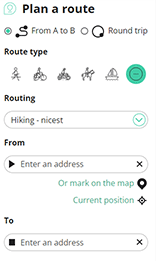

In the Middle Ages, the coast near Petten consisted of a dune bar that was a kilometer further west than the current coast. In the 15th century, the St. Elizabeth's Flood (1421) caused a breakthrough that knocked away a large part of the dune bar. The dunes were subsequently restored, but the sea continued to calving the dunes on the sea side, which was compensated by sand replenishment on the land side. This flexible coastal defense, with the dune bar moving eastward over the years, …Read more
 Azure
Azure![]() | | Public | Dutch
| | Public | Dutch

Select one of the most popular activities below or refine your search.
Discover the most beautiful and popular trails in the area, carefully bundled into appropriate selections.
Source: http://nl.wikipedia.org/wik...
Select one of the most popular categories below or be inspired by our selections.
Discover the most beautiful and popular attractions in the area, carefully bundled in appropriate selections.
Source: http://nl.wikipedia.org/wik...
With RouteYou, it's easy to create your own customised maps. Simply plot your route, add waypoints or nodes, add places of interest and places to eat and drink, and then easily share it with your family and friends.
Route planner

© 2006-2025 RouteYou - www.routeyou.com
Recent commentsShow all
No comments found.